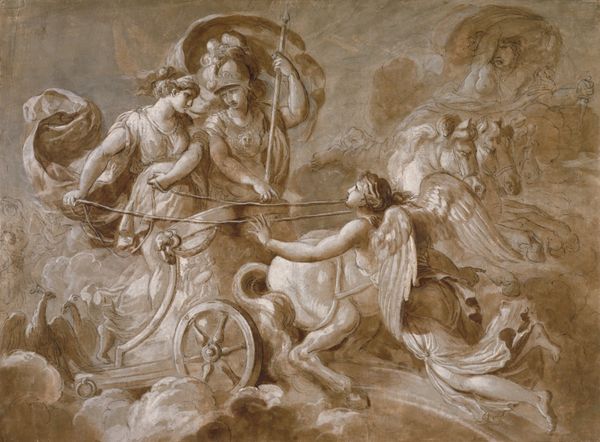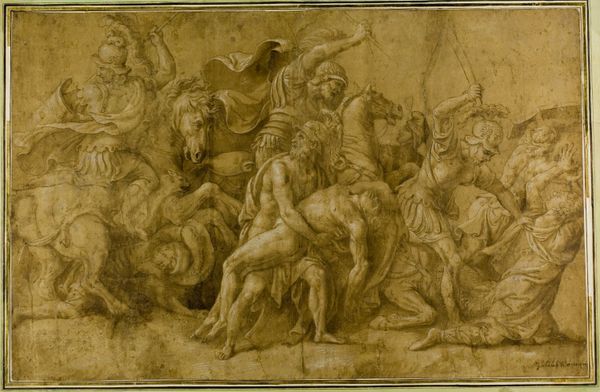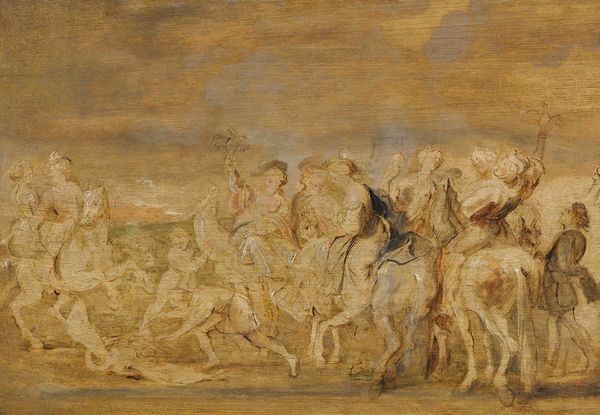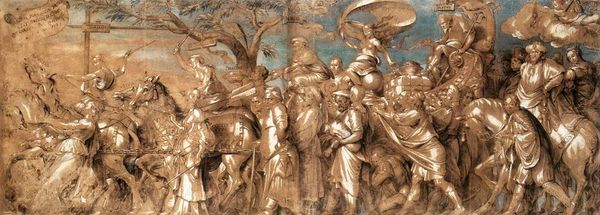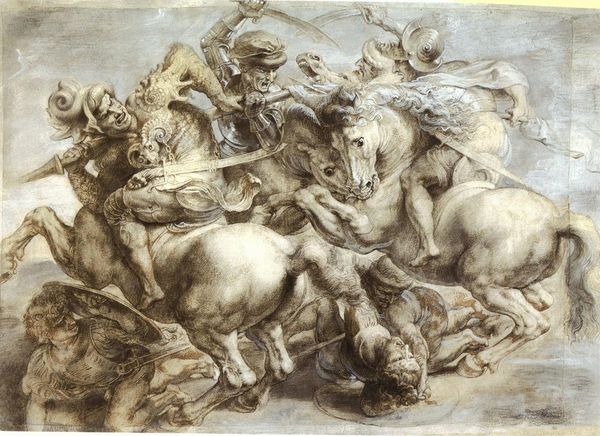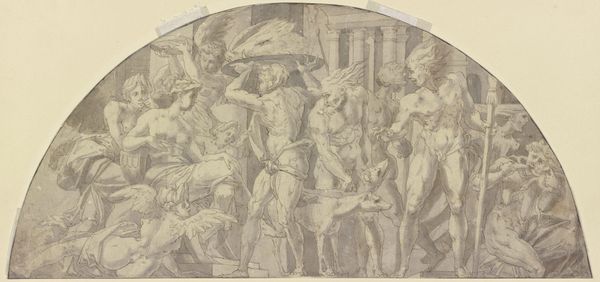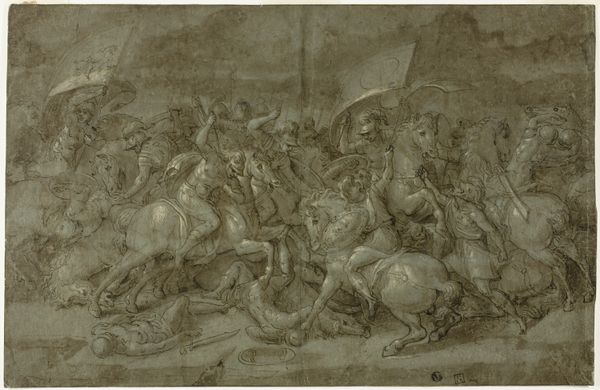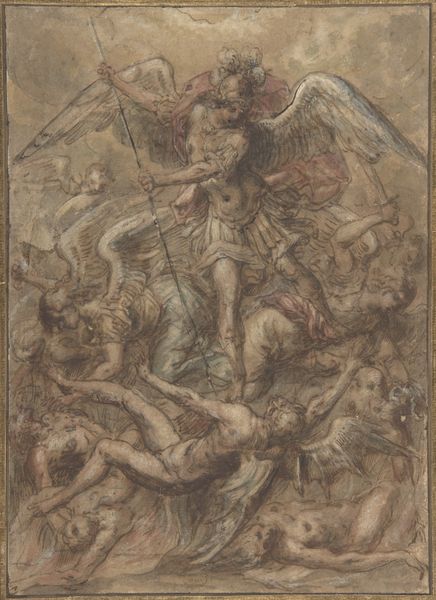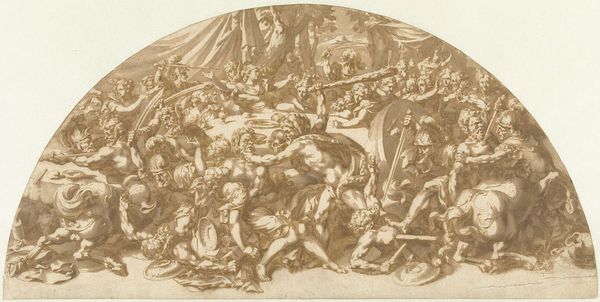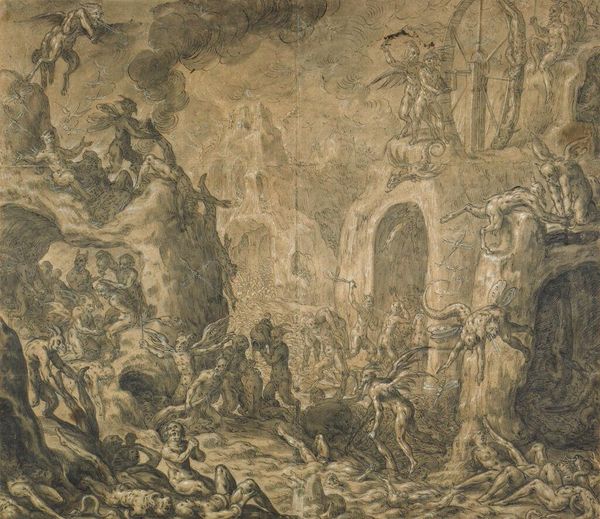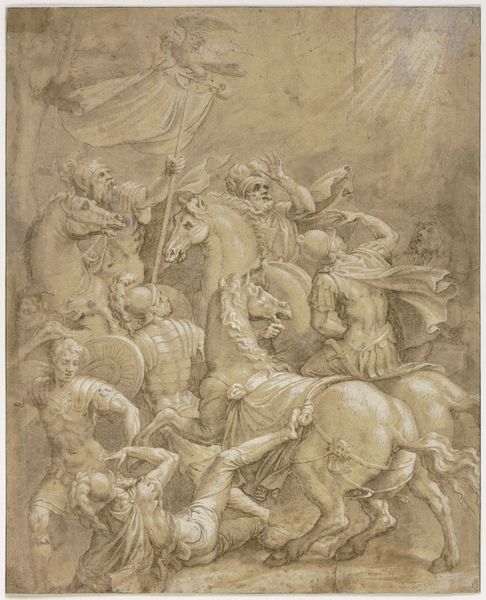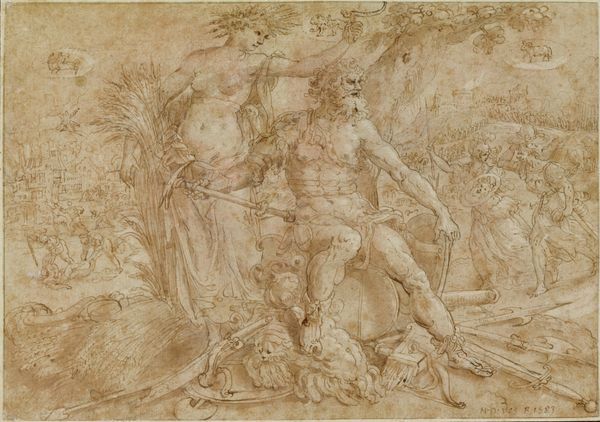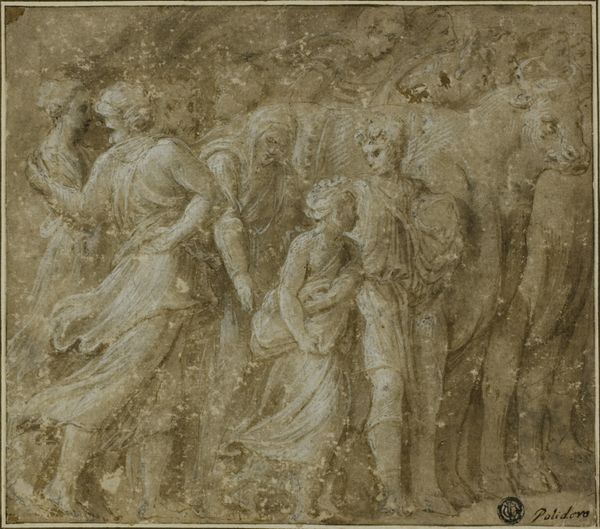
painting, oil-paint
#
baroque
#
painting
#
oil-paint
#
figuration
#
oil painting
#
mythology
#
history-painting
#
nude
Copyright: Public Domain: Artvee
Peter Paul Rubens created this oil on panel sketch of ‘Bellona’ amidst the religious and political conflicts of the 17th century. Rubens worked in the service of powerful rulers and was a courtier himself. The painting is named after the Roman goddess of war. Rubens has surrounded Bellona with imagery alluding to the spoils and miseries of war. Bellona is a figure of authority amidst a landscape of male suffering. What does it mean to frame a woman as the embodiment of war? Rubens seems to adhere to the common trope of associating women with negative forces, rather than positioning her as an agent of her own power and volition. The women around the vase, drawing water, could be read as preparing to clean the spoils of war. But in the process of mythologizing, has Rubens erased the reality of women’s experiences of war and power? This painting invites us to consider the historical and enduring complexities of gendered representations. The artwork compels us to reflect on how women’s identities are constructed and interpreted within the narratives of conflict and dominance.
Comments
No comments
Be the first to comment and join the conversation on the ultimate creative platform.
